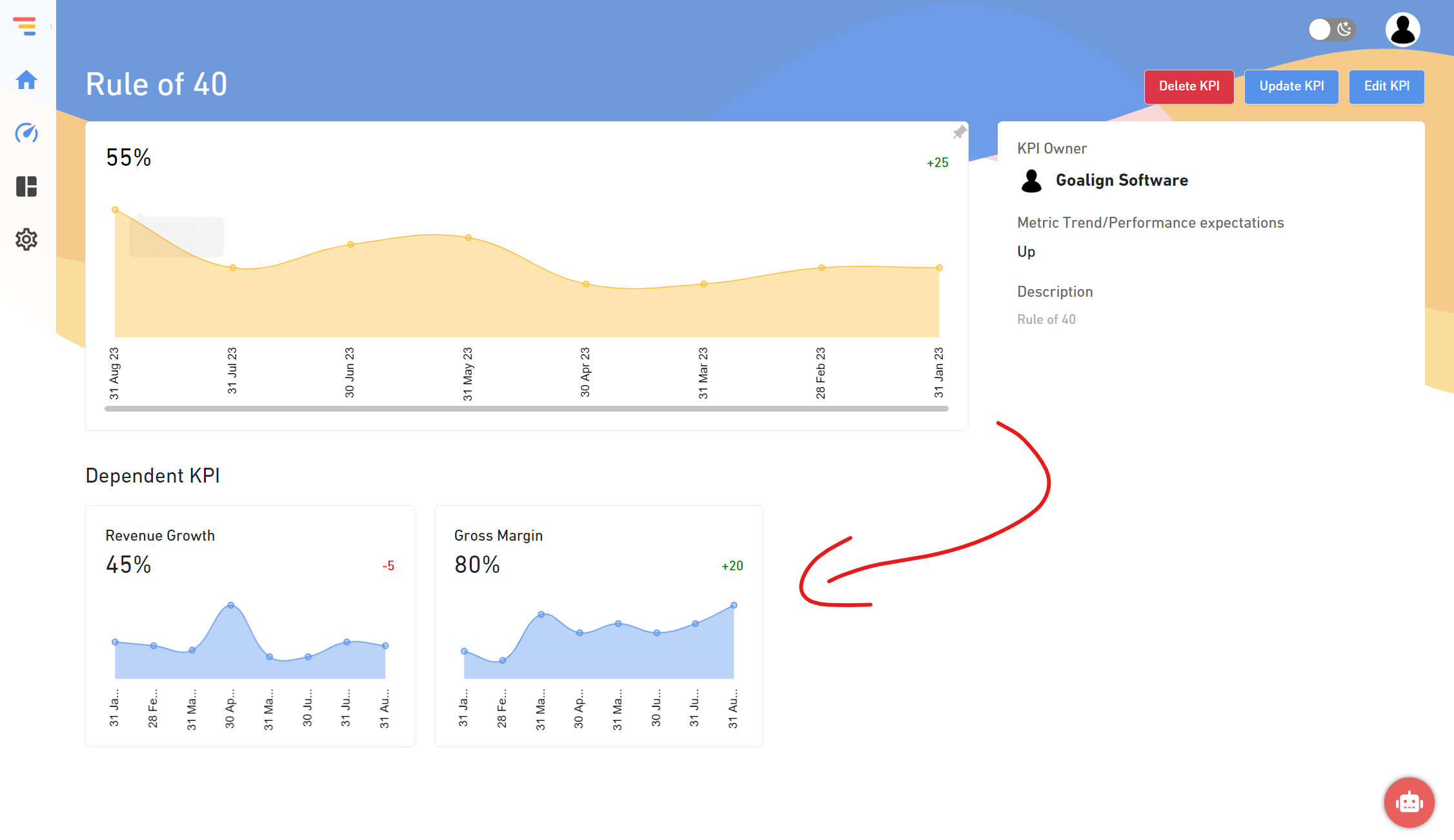Introduction to OKR Benefits:
OKRs are a strategy-execution framework invented by Andy Grove of Intel and popularized by John Doerr in Measure What Matters. The framework was designed to accommodate today’s fast and rapidly changing business environment by aligning teams to strategic goals while monitoring the company’s overall development and progress.
OKRs are used to aid in the optimization of the link between company strategy and execution. It boosts overall corporate effectiveness by establishing a routine. Companies may push and accomplish super-ambitious objectives thanks to OKRs, and it all comes down to being extremely deliberate about selecting and monitoring indicators. In this post, we’ll look at how OKR may benefit businesses. Check out this article if you’re not familiar with OKR methodology.
Why do companies use OKRs?
Companies traditionally create high-level organizational goals at the start of the year, and then everyone forgets about them within a month. As a result, management becomes passive. Leaders find it challenging to assess and track their staff’s growth and goal attainment. Executives and managers struggle to understand which teams or people are performing well, exceeding expectations, or falling short.
It becomes challenging to integrate diverse teams and individuals’ goals and cascade them to company-level objectives, causing employees to feel detached from the bottom up. Workers are unclear about how their behaviours relate to what is essential to the organization. It is also challenging to develop a quantifiable, predictable, and repeatable business model when operating in this manner.
Businesses seek to define goals in Microsoft PowerPoint, Excel, or Google Docs to address the problem and then convey these goals via email. This is a relatively static procedure, and many businesses cannot manage or track goal progress using this method. Objectives aren’t available or visible to everyone in real-time with static techniques like this, and people can’t tie their work to unseen goals. To overcome this, several businesses have implemented the OKR goal formulation approach, OKR tracking methodologies, and technologies like Workfront Goals to keep their goals aligned.
Benefits of Using OKRs
By informing managers about which team members are engaged, objective and key results (OKRs) increase efficacy and engagement. This data is readily available via a weekly OKR goals check-in procedure, which gives managers visibility into who is meeting their OKRs. OKRs assist managers in building high-performing teams by empowering and engaging employees to improve their performance. Learn more about the advantages of adopting OKRs by reading on:
1. Team alignment
This is OKR’s primary purpose and benefit. They link the aims and activities of the team and individuals to the company’s strategic mission. OKRs are established at the corporate level by top management (preferably collaborating and syncing with all the team before finalizing them). Based on these, each team/department develops its OKRs to aid in the achievement of company-wide goals. And depending on the team’s objectives, each individual establishes their own. The use of objectives and key results ensures that everyone is heading in the same direction.
2. Flexibility
OKRs work best when implemented in quarterly cycles. Each Objective is attainable in one business quarter, and long-term achievements are divided into shorter targets. OKRs integrate long-term strategic goals while also adapting to change and experimenting with new ways, all while minimizing the implications of risks and waste.
OKRs, as opposed to typical long-term strategic planning, prefer shorter goal cycles that allow teams to modify and adapt to change, decreasing risks and waste. Strategic OKRs are often established for a year, whereas tactical OKRs are set for a quarter. At the end of each cycle, everyone reviews the findings and, if necessary, updates the strategic OKRs. A shorter tactical OKR cycle for newer firms, such as 6 or 8 weeks, maybe preferable.
Regular and short cycles save planning time, and team members do not need to bet on what will happen in the next 2 to 5 years.
3. Focus team
Because of the simplicity and reduced quantity of Objectives and Key Results, each employee can focus on what is truly important. It is advised that each team/individual have 2-4 Objectives, with no more than 3-5 Key Results for each Objective. Anything unrelated to the current Objectives can be transferred to the queue for the next cycle.
The OKR technique is based on concentrating on the important few rather than the insignificant many. The framework helps teams to focus on what is truly important.
Just because a firm maintains BAU KPIs and people work hard on their responsibilities does not guarantee the organization is on the road to fast growth. This is why BAU isn’t a big deal in OKRs because objectives are limited but concentrated. This is when the 3×5 rule of OKRs comes into play!
Companies may use the 3×5 rule of OKRs to employ the time spent on high-effort-low-impact jobs far more efficiently.
4. Autonomy and accountability
Bottom-up goal setting enables businesses to improve by leveraging their front-line knowledge of the challenges. Because upper management is only aware of roughly 4% of the difficulties on the front lines, this technique contributes to the melting of the iceberg of ignorance. A decent rule of thumb is that at least 60% of OKRs are determined by team members rather than management. With this method, everyone is personally accountable for their goals and is more driven to attain them. The current understanding of motivation lends credence to this approach.
5. Engaged employees
Transparency, alignment, and bi-directionality provide a sense of individually contributing to a greater mission, boosting team members’ engagement and drive. This is significant because just 13% of employees globally are engaged (Gallup). Increased employee engagement leads to increased work satisfaction and productivity.
6. Achieving beyond expected
Objectives urge everyone to think beyond the boundaries of what appears feasible, create creative and inventive solutions, and accomplish extraordinary achievements. OKRs are designed to encourage teams to think beyond the box. As a result, the average score for achieving them should not exceed 70-80 percent. However, keep in mind that the organization should be mature and seasoned enough to recognize and accept such results without being irritated. For those new to the OKRs concept, not always meeting your goals may be discouraging at first.
7. Ambition
Companies feel empowered to create Moonshot or Aspirational Objectives while using the spear-fishing method of OKRs. Moonshot objectives urge the company to think large, be creative, and develop new ideas. As a result, teams may experiment, test new ways, and push themselves beyond their comfort zones.
Failure to meet the intended outcome is also part of the OKR culture. Failure is seen positively as a learning experience, especially if your aspirational or moonshot KRs are not reached. One should not be so terrified of failing that they do not try to achieve their stretch objectives.
Even if the Moonshot OKR is not met, teams do more than they imagined possible and achieve extraordinary outcomes!
Conclusion:
OKR is the platform required to accelerate your organization’s development and simplify efficiency. OKRs help your firm create a culture of concentration and coordinated cooperation. It establishes a mechanism for your teams to prioritize outcomes, assess and track progress toward targets, and strive for rapid development. Google and Intel are only two instances of OKRs’ potential – when used appropriately, of course!






